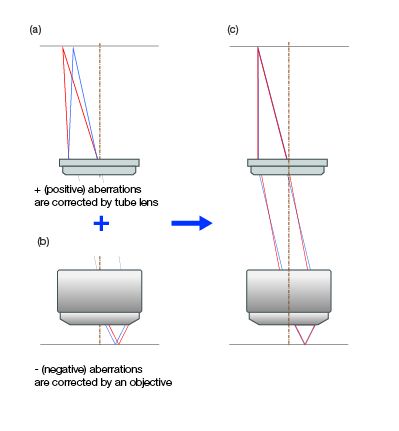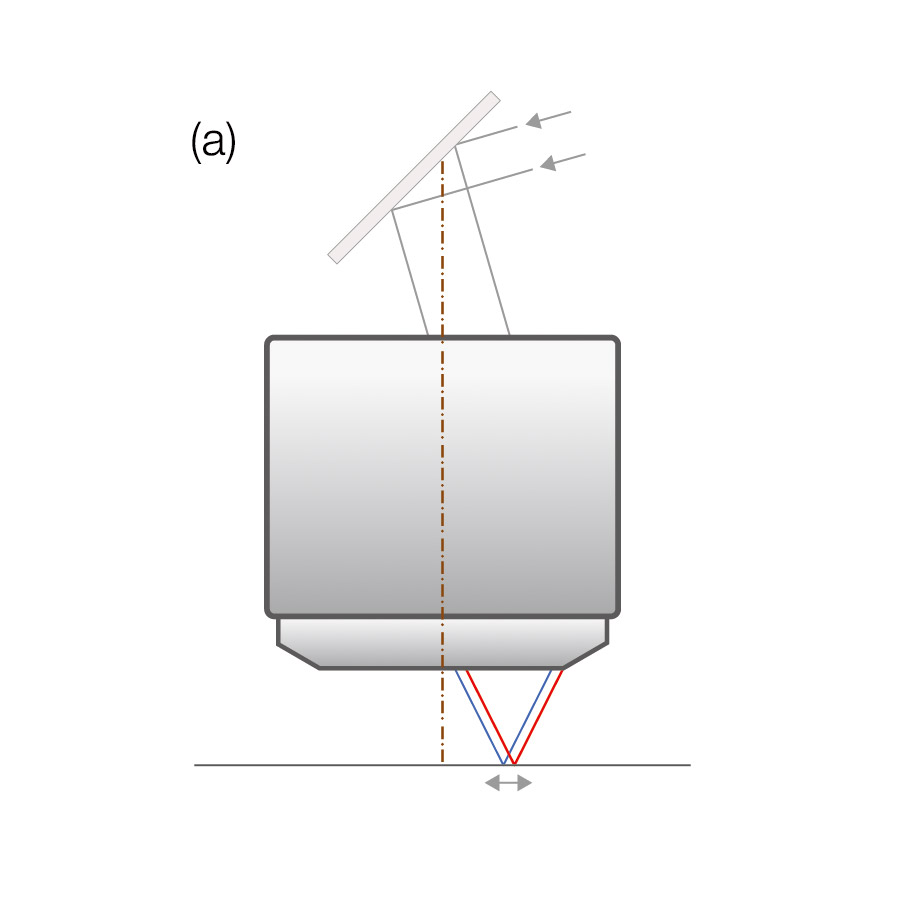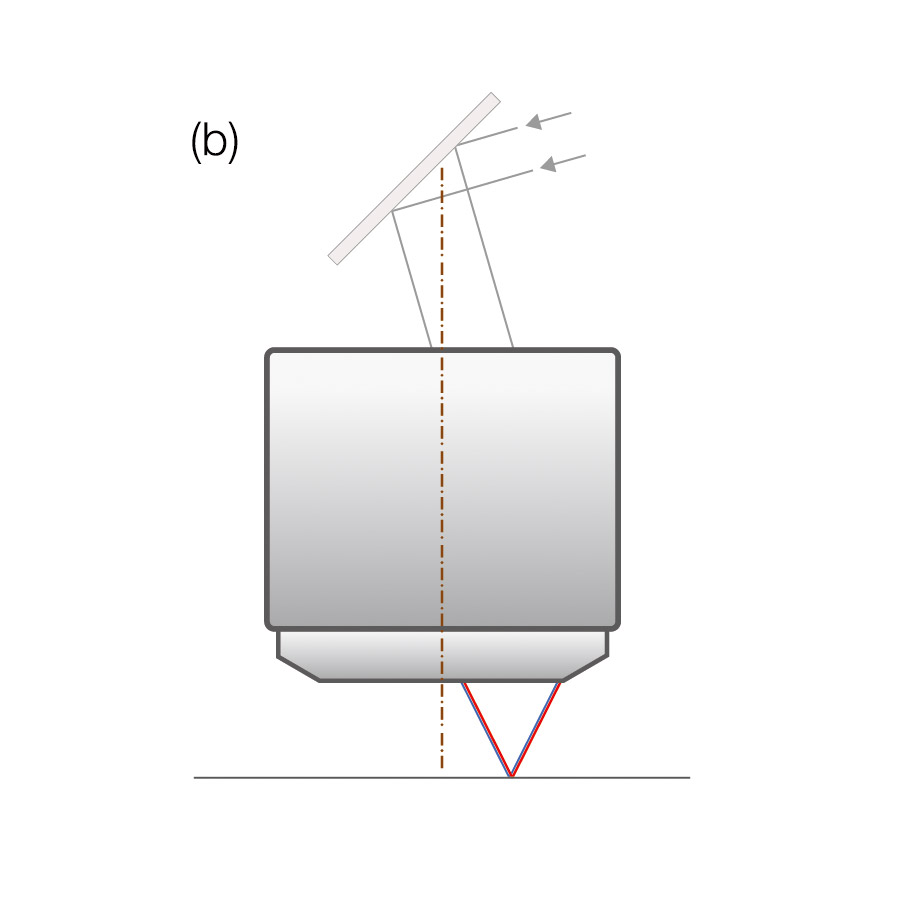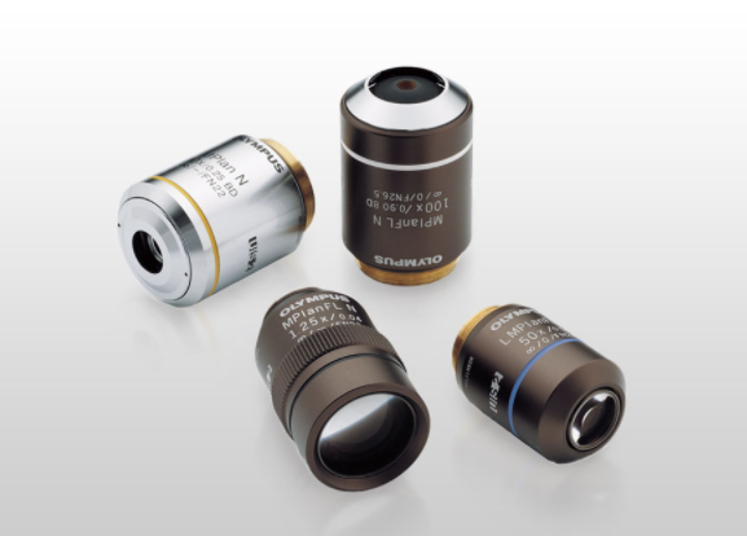At Olympus, we’re known for our high-end microscopes that support the life science, medical, and industrial fields (as well as many others). What you may not realize is that in addition to designing our own microscopes, we supply objectives and other optical parts to microscope-based imaging system manufacturers to assist engineering teams around the world.
When designing new devices, these engineers have the common aim of ensuring high image quality and flexibility. One way we help meet this goal is by developing imaging optical systems with compensation-free lenses. Read on to learn how these optical systems improve microscope design and performance.
Designing an Imaging Optical System for a Microscope
An imaging optical system for a microscope consists of an objective, which is placed close to the specimen, and a tube lens, which focuses the light from the objective. Today, objectives are often designed to emit parallel light rays (to be infinity corrected) so that optical components, such as a half mirror for splitting a beam and a filter for fluorescence observation, can be added into the light path between the objective and the tube lens.
To produce high-quality images, aberration correction is used in objective design. This is generally employed in two ways: the compensation method and the compensation-free method.
Here’s a brief overview of each method:
The compensation method
When an optical system is designed with the compensation method, the objective and the tube lens work to correct aberrations in a complementary way.
The compensation-free method
In contrast, when an optical system is designed with the compensation-free method, the objective and the tube lens are fully corrected for aberrations independently of each other.
The difference between these two methods is illustrated in Figures 1-2 below.

Figure 1: The mechanisms of aberration correction with the compensation method. The objective and the tube lens work to correct aberrations in a complementary way.

Figure 2: The mechanisms of aberration correction with the compensation-free method. The objective and tube lens correct aberration independently of each other.
Advantages of the Compensation-Free Method for Microscope Design
If you design an objective and a tube lens with the compensation method, you will face various problems if you only want to integrate the objective or tube lens in your system.
Consider this example: the schematic diagram below (Figure 3) shows how a laser beam is introduced to a specimen via an objective. If the objective was designed with the compensation-free method (Figure 3a), the laser beam won’t be affected by the laser wavelength. In contrast, if the objective was designed with the compensation method (Figure 3b), the laser beam will be directed to an unintended point because aberrations at the objective haven’t been eliminated.
 |  |
Figure 3: (a) With the compensation method, the laser beam is directed to an unintended point. (b) Effect of the optical design method on laser introduction. With the compensation-free method, the laser beam isn’t affected by the laser wavelength.
Benefits of Integrating Compensation-Free Optics into a Microscope Design
Incorporating an imaging optical system designed with the compensation-free method can benefit your device by:
- Giving your system the ability to acquire a clear image with no color blurs throughout the entire field of view, even if only the objective is implemented
- Improving the laser positioning accuracy when lasers with different wavelengths are introduced
Imaging optical systems designed with the compensation-free method can improve the reliability and performance of microscope-based imaging systems. One example is our Olympus UIS2 objectives combined with our super wide tube lens. In particular, the X Line objectives, which are corrected for aberrations within a range of 400–1,000 nm, can be used for widefield, high-resolution observations with a broad range of wavelengths. The tube lens, which is also designed with the compensation-free method, can be used independently. Both optical components are compact and lightweight for easy integration.
In summary, these optical parts help engineering teams design microscopes that can easily maintain a uniform image quality throughout the entire field of view, even when combined with commercially available lens components.
To find out more about Olympus’ high-quality OEM optics, components, frames, and parts to integrate into your microscope designs, please visit www.olympus-lifescience.com/oem-components.
Related Content
Why Objectives with Wavefront Aberration Control Are Essential for Good Microscope Design
Good Optics—Improving Single-Molecule Sensitivity in Confocal Microscopy

